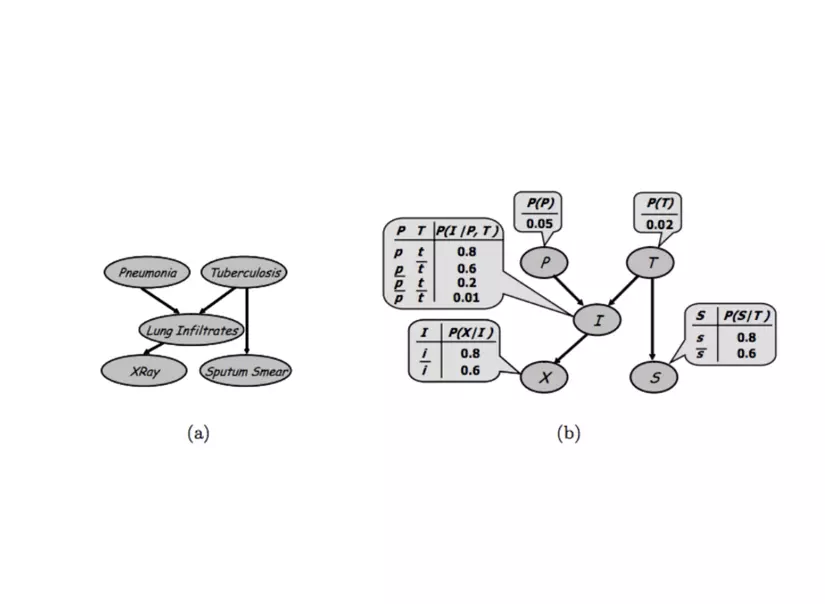In order to solve AI problems, in addition to transforming subproblem problems in accordance with designed algorithms, we have another method to handle them. That is instead of changing the original problem, we will go to design a model dedicated to that problem. For example, with the problem of making a nutritional diagnosis for children, we can simply set a specific number of features to turn the diagnostic problem into a labeling problem. But besides that, we can also create a separate model to diagnose not only children who are insufficient, deficient or undernourished, but can also give a reason why children are undernourished / excess. There is a framework that can help us do that – the PGM (Probabilistic Graphical Model). In this framework, there are 2 popular groups that are applied: Bayesian Network and Markov Network. In this article, we will learn how the two groups perform.
1. Bayesian Networks (BNs):
- The soul of this group’s representation is the use of directed and non-repeatable graphs (there is no closed loop in this directed graph) – denoted by G. In each node of G is a random variable representing the information or feature contained in the problem and the edges (edges) tend to show the influence between the nodes. For example, the possibility of iron deficiency children depends on the amount of food they eat every day with a lot of beef / pork or not. In other words, this graph is how the data structure helps to represent Joint Distribution (probability probability) of the model.
- G is a BN with random variables X1, …, Xn. Where each random variable Xi in the graph G corresponds to a node in G assigned to a factor. In the case of BN factor at node environment is Conditional Probability Distribution (CPD) or local probabilistic model. Xi’s CPD is the probability distribution of the Xi variable when the variable values of the random variables are their parent nodes (Xi may have more than one parent – parent or leaf node, or no parent – root node). . Each CPD can be represented by tables, tree structure or noisy-OR, noisy-MAX

In the picture on the left is the description for the graph corresponding to the problem content and the right CPD of each node respectively. The problem of predicting 2 diseases of Pneumonia (pneumonia) and Tuberculosis (tuberculosis). Pneumonia can make patients with Lung Infiltrates (lung lesions appear) and Lung Infiltrates can be observed through XRay film. Tuberculosis can produce Sputum Smear (phlegm). In this example, you can see that the observed information is XRay and Sputum Smear but even though only one of these two information we have conclusions about getting TB or pneumonia.
2. Markov Networks:
The second most popular group is called Markov Networks or Markov Random Field. This group, instead of the directional graph, uses the scalar graph. Therefore, they are very useful in modeling many problems where phenomena (described by random variables) cannot know their mutual effects (cannot use directed graphs). ) The symbol of the graph representing Markov Network is H, just like BN each node is a random variable and the edges represent a “certain kind of probability” that represents the interaction between the two nodes connected by this edge. Unlike BN “certain types of probability” here do not correspond to probability (probability) or conditional probability (conditional probability). So in the case of Markov Network we just say each node is represented by a factor.

In the image above, the left is the problem and the right is the Markov Network with factors corresponding to each node and each edge. The problem here is to observe the situation of tuberculosis in 4 patients in which the patients are in contact with each other as shown in the picture (patient 1 with patient 2, patient 2 with patient 4, patient 4 with the disease 3, patient 3 and patient 1).
References and translations from https://www.sciencedirect.com/topics/computer-science/bayesian-networks
